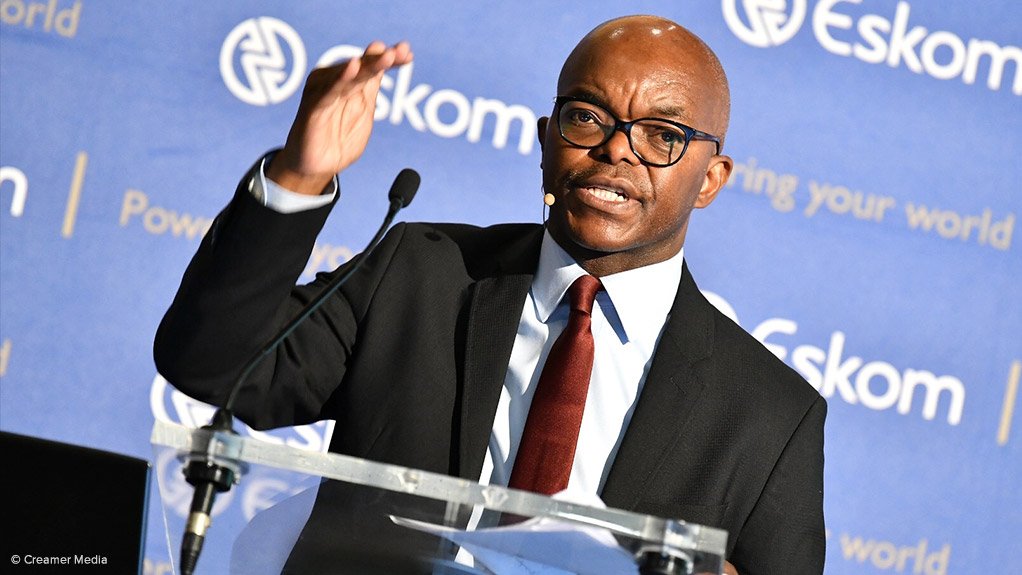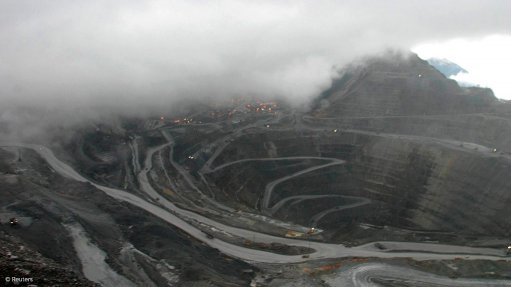Eskom to buy ‘emergency’ coal, splurge on diesel as load-shedding risk returns
South Africa’s power utility Eskom reports that it has received approval from the National Treasury for the “urgent procurement” of four-million tons of emergency coal to help address serious stock shortfalls at several of its 15 coal-fired power stations.
More than 1.1-million tons have already been secured and the first emergency coal will be delivered in December.
Ten Eskom stations currently have coal stockholdings below the 20-days stipulated by South Africa’s Grid Code, while five have less than ten days of stock.
Eskom CEO Phakamani Hadebe says that, should the emergency procurement plan succeed, all stations will recover to “healthy” stock levels by the end of March 2019, by when the system could have stocks of over 36 days.
The emergency procurement plan is additional to the short-term coal stock recovery initiative announced earlier in the year, when it first emerged that Eskom was running short of coal.
Stock levels have declined precipitously since October 2017, when coal stocks across the Eskom system were above 40 days. The rapid depletion coincided with a decline in supplies from Tegeta, a company previously owned by the Gupta family and which is in business rescue.
Hadebe says 27 new coal contracts have been concluded between January 2018 and October 2018 for the supply of 15.8-million tons in the current financial year.
Additional coal contracts will be signed soon and the State-owned utility is buying coal in line with the Preferential Procurement Policy Framework Act and the Public Finance Management Act and is, thus, not demanding that coal suppliers are majority owned by black shareholders.
In fact, Hadebe reports that, of the contracts concluded to date, more than 70% have been signed with companies whose black shareholding is below 50%.
In the longer term, Eskom intends shoring up its supply of coal by extending cost-plus contracts, reinvesting in cost-plus mines, extending existing long-term fixed-price contracts and by conducting open tenders to source uncontracted coal for the life of power stations.
In addition, it intends moving 12-million tons of coal from the much-delayed Medupi power station, in the Limpopo province, to coal-fired power stations in Mpumalanga. The coal will be transported at a yearly rate of around 1.7-million tons, with about 1.4-million tons a year of that to be railed by Transnet.
UNPLANNED OUTAGES SURGE
The coal shortage is also coinciding with a sharp deterioration in operational performance of the coal fleet. Unplanned outages have surged to over 15% of capacity at a time when planned summer maintenance has increased to 8.6% of capacity and is expected to rise further before year-end.
The combination of planned and unplanned outages has resulted in the coal-fleet’s energy availability factor (EAF) falling to only 66.5% – well short of Eskom’s EAF aspiration of 80% and also significantly below the year-to-date average of 74.2%.
This poor coal-plant performance has also, once again, raised the risk of a return to rotational load-shedding, despite ongoing weak demand growth.
Already, the tight supply-demand balance has resulted in a far higher use of the country’s expensive diesel-fuelled open-cycle gas turbines (OCGTs), including those owned by independent power producers.
The utility is now budgeting to spend between R750-million and R1-billion more on diesel in the year to March 31, 2019, than the R660-million approved for OCGT use by the regulator.
Eskom is also beginning to draw more heavily on interruptible contracts it has in place with some of its large customers and has initiated engagements with its municipal customers to ensure they have their load-shedding schedules in place, should such cuts be required.
The risk of load-shedding will increase further as the northern parts of South Africa, where all the coal-fired stations are located, enters its rainy season. During heavy rains coal handling becomes more difficult, which could be exacerbated this season as a result of coal shortages.
COO Jan Oberholzer reports that at least three-days of strategic stockpiles will be assembled for use during sustained rainfall at all critical power stations.
These strategic stocks will be located close to the power stations, will be compacted to protect them from water ingress and stations will be allowed to draw on the coal only after receiving an explicit authorization to do so from Oberholzer.
The urgent procurement of four-million tons of coal, the coal recovery plan, preparing for the rains and the increased use of diesel in the coming months are all included in a larger ‘nine-point system recovery plan’ designed to return the EAF to 75% by November 2019.
The other components unveiled by Hadebe include:
- Investing a further R1.5-billion at Medupi and Kusile to address design weaknesses that have undermined plant reliability once units are synchronised to the grid.
- Fixing full load losses and trips by improving maintenance planning, speeding up procurement processes and refining spares management.
- Fixing units on long-term forced outages, such as Lethobo Unit 5, Duvha Unit 4, Grootvlei Unit 2 and Kriel Unit 2.
- Addressing partial load losses by investing R11.5-billion during the implementation of 59 outages across the fleet between September this year and December 2019.
- Reducing the slippage of outage schedules by improving planning and execution.
- And improving human resource accountability by appointing permanent power station managers and increasing their authority to make procurement and operational decisions.
Nevertheless, Hadebe stresses that, “while Eskom has a recovery plan, load-shedding cannot be ruled out for the remainder of 2018.”
Comments
Press Office
Announcements
What's On
Subscribe to improve your user experience...
Option 1 (equivalent of R125 a month):
Receive a weekly copy of Creamer Media's Engineering News & Mining Weekly magazine
(print copy for those in South Africa and e-magazine for those outside of South Africa)
Receive daily email newsletters
Access to full search results
Access archive of magazine back copies
Access to Projects in Progress
Access to ONE Research Report of your choice in PDF format
Option 2 (equivalent of R375 a month):
All benefits from Option 1
PLUS
Access to Creamer Media's Research Channel Africa for ALL Research Reports, in PDF format, on various industrial and mining sectors
including Electricity; Water; Energy Transition; Hydrogen; Roads, Rail and Ports; Coal; Gold; Platinum; Battery Metals; etc.
Already a subscriber?
Forgotten your password?
Receive weekly copy of Creamer Media's Engineering News & Mining Weekly magazine (print copy for those in South Africa and e-magazine for those outside of South Africa)
➕
Recieve daily email newsletters
➕
Access to full search results
➕
Access archive of magazine back copies
➕
Access to Projects in Progress
➕
Access to ONE Research Report of your choice in PDF format
RESEARCH CHANNEL AFRICA
R4500 (equivalent of R375 a month)
SUBSCRIBEAll benefits from Option 1
➕
Access to Creamer Media's Research Channel Africa for ALL Research Reports on various industrial and mining sectors, in PDF format, including on:
Electricity
➕
Water
➕
Energy Transition
➕
Hydrogen
➕
Roads, Rail and Ports
➕
Coal
➕
Gold
➕
Platinum
➕
Battery Metals
➕
etc.
Receive all benefits from Option 1 or Option 2 delivered to numerous people at your company
➕
Multiple User names and Passwords for simultaneous log-ins
➕
Intranet integration access to all in your organisation





















